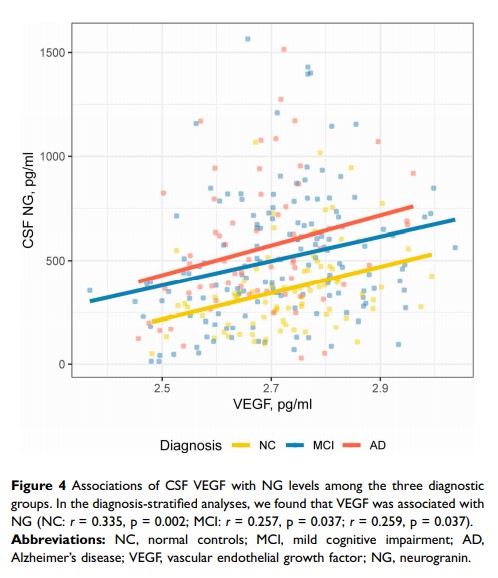9 1 2 3 6
论文已发表
注册即可获取德孚的最新动态
IF 收录期刊
- 2.6 Breast Cancer (Dove Med Press)
- 3.9 Clin Epidemiol
- 3.3 Cancer Manag Res
- 3.9 Infect Drug Resist
- 3.6 Clin Interv Aging
- 4.8 Drug Des Dev Ther
- 2.8 Int J Chronic Obstr
- 8.0 Int J Nanomed
- 2.3 Int J Women's Health
- 3.2 Neuropsych Dis Treat
- 4.0 OncoTargets Ther
- 2.2 Patient Prefer Adher
- 2.8 Ther Clin Risk Manag
- 2.7 J Pain Res
- 3.3 Diabet Metab Synd Ob
- 4.3 Psychol Res Behav Ma
- 3.4 Nat Sci Sleep
- 1.9 Pharmgenomics Pers Med
- 3.5 Risk Manag Healthc Policy
- 4.5 J Inflamm Res
- 2.3 Int J Gen Med
- 4.1 J Hepatocell Carcinoma
- 3.2 J Asthma Allergy
- 2.3 Clin Cosmet Investig Dermatol
- 3.3 J Multidiscip Healthc

CSF VEGF 与不依赖于 β-淀粉样蛋白病理的神经颗粒素呈正相关
Authors Huang Y, Wang J, Zhu B, Fu P
Received 1 March 2020
Accepted for publication 21 April 2020
Published 22 July 2020 Volume 2020:16 Pages 1737—1744
DOI https://doi.org/10.2147/NDT.S252008
Checked for plagiarism Yes
Review by Single-blind
Peer reviewer comments 2
Editor who approved publication: Dr Yuping Ning
Purpose: Increasing evidence suggests that both vascular endothelial growth factor (VEGF) and synaptic failure have been involved in the pathogenesis of Alzheimer’s disease (AD). However, it is not clear whether CSF VEGF levels are associated with synaptic function in living human.
Patients and Methods: In the present study, we included a total of 291 older individuals, including 83 individuals with normal cognition (NC), 143 individuals with mild cognitive impairment (MCI) and 65 patients with AD. Several linear regression models were conducted to examine the associations of CSF VEGF with CSF neurogranin levels (NG, reflecting synaptic degeneration) when controlling for other potential confounding factors, including age, gender, years of education, clinical diagnosis, APOE4 genotype and CSF β-amyloid 42 (Aβ 42) levels.
Results: There was no significant difference in VEGF levels between the three diagnostic groups. In the pooled sample, females had significantly lower levels of VEGF than males. Aβ-positive (CSF Aβ 42 < 192 pg/mL) individuals had lower levels of VEGF than Aβ-negative individuals. However, the relationships between VEGF and NG levels were not modified by disease stage. Finally, we found that CSF VEGF levels were associated with NG levels with adjustment of age, gender, years of education, clinical diagnosis, APOE4 genotype and CSF Aβ 42 levels.
Conclusion: CSF VEGF levels were associated with NG independent of AD pathology and disease stage.
Keywords: vascular endothelial growth factor, neurogranin, synaptic dysfunction, Alzheimer’s disease
